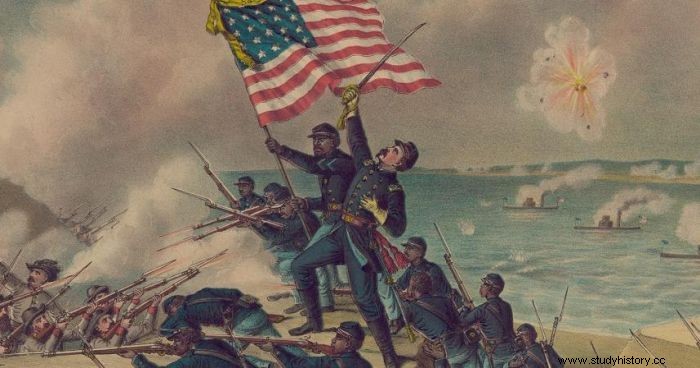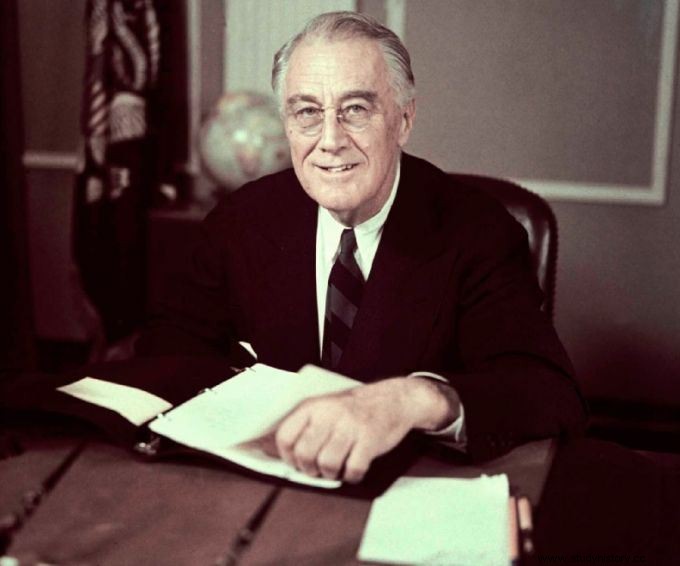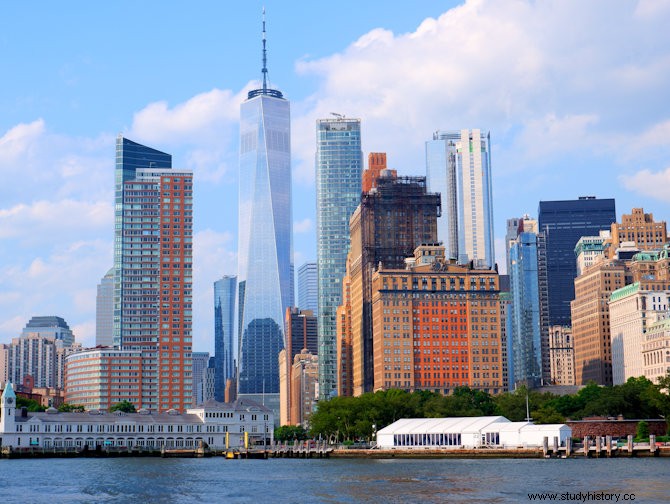New York officially marks the name thanks to the European discovery. The Italian explorer Giovanni da Verrazzano in 1524 was the pioneer of the Dutch people. In 1624, the Dutch established their settlement along the Hudson River.
New York is known as one of the original 13 colonies in the United States. Its leading status affected all cores of culture and economy until the 1960s. California took over pretty soon.
The landscape in New York is characterized by many contrasts. Shaped by the Atlantic Ocean and Long Island, a similar tune shines on the Great Lakes. The skyscrapers of Manhattan spice up the extra story. Brooklyn is a special place to discover as a world of movies and TV series.
In the mid-19th century, New York became home to millions of immigrants from Europe. This time, New York's image and economy changed drastically.
New York under Native Settlement
The Lenape people inhabited the modern area of New York. They spoke the Algonquian language, now known as Unami. Manahatta is the name they gave to the region, which means the place with many hills. The Lenape or Delaware people inhabited present-day Delaware, New Jersey, and eastern Pennsylvania. New York City should also be included.

The Dutch people established New Amsterdam in 1626, but the British took possession and renamed it New York in 1664.
The people of Lenape were given different names by European settlers, depending on the places where they lived. Some of these names were "Raritan" in Staten Island, Canarsee in Brooklyn and Hackensack in New Jersey.
Abundant waterways in New York were their source of fishing, hunting and trade. The Lenape people developed the subtle science of agriculture using the slash-and-burn technique.
Pre-colonial period
By operating the French ship La Dauphine in 1524, the Italian explorer Giovanni da Verrazzano explored the Atlantic coast of North America. He called the area New Angoulême, considering the city of Angoulême in France.

Henry Hudson was an Englishman who represented the Dutch navy and in 1609 gave his name to the Hudson River. Hudson's goal was to find a shortcut to Asia just like Christopher Columbus. The importance of the beaver population plays a large part in New York City's history. Its official seal also pays homage to beavers.
Dutch and British colonial period
Henry Hudson and his ship Half Moon represented the Dutch East India Company. The fur trade was developed in today's Albany thanks to the efforts of Henry Hudson.
Several Dutch families found their new home on today's Governor's Island on the southern wings of Manhattan. The construction of Fort Nassau in 1614 provided the basis for the Dutch settlement, which served as a trading post. Joan Rodrigues was the first non-native of Manhattan Island.

In fact, Peter Minuit bought the island of Manhattan in 1626. As governor of the Dutch West India Company, he called a colony New Amsterdam. The British people won the island of Manhattan thanks to the Westminster Treaty in 1674. By renaming it New York, they praised the Duke of York.
The British gave wings to the commercial success of New York and founded Colombia University in 1754.
New York Province
The Province of New York (1664-1776) was a British colony that shaped the United States. The colony developed from the Dutch province of New Netherlands. After the Second Anglo-Dutch War in 1664, England gained power. The government ruled directly from England and applied common English law in the colony.
The province officially became the state of New York in 1776, giving power to its first constitution in 1777. New York served as a military and political base for British power in North America.
Finally, New York glorified independence from the crown by the Treaty of Paris in 1783.

New York focused economically on agriculture on Long Island and the Hudson Valley. The main tracks in agriculture were bread and lumber production for the British sugar colonies in the Caribbean. Trade and crafts represented another source of economic activity.
New York in the American Revolution
The American Revolutionary War established the United States as a country separate from Britain. New York during this time played an important role. The Stamp Act of 1765 created a throne for the uprising and introduced direct taxes on the British colonies in America. The printed material had to be produced in London and paid for in British currency.
The largest battle of the war was the Battle of Long Island in 1776, and took place in present-day Brooklyn. The struggle led to the failure of the Americans and a new British military and political base. The battles of Lexington and Concord made compromise between merchants and the king impossible because of their enormous losses.

The great fire in New York in 1776 destroyed a large number of buildings in the city, including Trinity Church. New York became the capital of the United States in 1785 just after the end of the war.
American Civil War (1861-1865)
During the Civil War, New York experienced a population growth. The trade was mostly dependent on cotton produced in the city. The media became the powerful wheel of public opinion. Newspapers such as The New York Times, The New York Tribune, Harper's Weekly and others appear. Agriculture in New York was the leading country in the country, especially grain production.

The transport system illuminated the canals and railways, taking into account that the Erie Canal was central. Military force played a drastic role in the United States, and even New York Harbor had several forts and garrisons.
The Declaration of Liberation of 1863 finally liberated the slaves. New York City did not experience the Civil War, but the troops made an effort in all major battles. The Battle of Franklin in 1864 was quite serious, while the three-day Battle of Gettysburg was the bloodiest.
New York City Draft Riots
The New York City Draft Riots were the violent uprisings in Lower Manhattan in July 1863. These days marked the opposition between the white working class and new congressional laws. This incident represents one of the largest urban disturbances in American history. President Lincoln organized several troops to control the city.
This week of protests turned into racist violence, also known as Draft Week. The damage during Draft Riots week was quite large with at least 120 civilians killed. $ 1 million includes the total property damage. Many black Manhattan residents moved to Brooklyn.
With many immigrants to New York and exports of cotton, fears emerged of the migration of black sleeves. Police were unable to stop the riots, but they succeeded in putting them away in Lower Manhattan. At least 2,000 people were injured.
Great Depression
Ten years of the Great Depression brought serious challenges and struggles in New York. It lasted from 1929 to 1939 when unemployment reached its highest level. Stock prices were the main cause of the Great Depression. Every corner of the country fell on the drastic change, and even the economic savings did not survive.
Many people became homeless, which is a total opposition to the rich city as it was. Progressivism floated to the surface just before the Depression. It was a direct response to modernization that provided social justice.

New York City was the cradle of the Great Depression, and did not recover from the market crash even after ten years. The New Deal followed the Great Depression, giving new programs for the recovery of President Franklin Delano Roosevelt.
Production reached its lowest level, which was the original cause of the Great Depression. The economy began to flourish soon after the Depression.
New Deal and its goals
Creating as many jobs as possible was the pristine essence of the New Deal. Trying the most practical method to improve the situation was a step forward. Roosevelt's speech gave the title to the program.
The First New Deal (1933-1934) laid the foundations for the Restoration System and the Second New Deal (1935-1938).
Further legal reforms. Works Progress Administration initiated millions of new jobs. Every core of life got a new shine, from building bridges to painting murals and writing plays.
The New Deal program was closely linked to the ideas of British economist John Maynard Keynes. Selling more products and hiring more workers was the main idea.
The New Deal was only partially successful, and even the Supreme Court opposed several projects. The main principles of the New Deal still prevail, including social security and the regulation of hours.
New York after World War II
New York City during World War II experienced a complete transformation due to the war, but also the Great Depression. The economic power of New York was unparalleled, and led it to the domination of production. More than 40,000 factories were lit.
Wholesale trade was at the highest level in all of America. Its economic dominance highlights the fact that it was the world's financial capital. Huge companies define the life of New York City.

Labor discrimination was officially banned in 1941. At the end of 1946, New York was given a new role when it began hosting the UN Permanent Headquarters.
Not only did the economic boom capture New York, but it flourished culturally. After 12 years, the legendary mayor of New York, Fiorello La Guardia, finally left in 1945. New York opened the doors to a new world after World War II.
The Modern Times of New York
The 20th century marks the continuous growth of the city, which reached 7 million people in the late 1980s.
New York City got its first African-American mayor in 1989 - David Dickins. Real estate experienced its exquisite growth after its quiet decline. Abandoned neighborhoods became artistic zones, such as Chelsea in Manhattan or Williamsburg in Brooklyn.
In the early 20s brought new bridges. This includes Williamsburg Bridge, Queensboro Bridge or Manhattan Bridge. The Verrazano Narrows Bridge, which connects Staten Island and Brooklyn, was built in 1964.
Many museums opened in New York City in the 1920s. One of the earliest was the Museum of the city of New York from 1923. The Gugenheim Museum marks the beginning in 1939.
The famous buildings of New York
Many famous buildings were built in the early 20th century.
The Flatiron Building was one of the first skyscrapers in New York, originally called the Fuller Building. Its triangular shape gave the exquisite feel of Maddison Square in Manhattan. It dates back to 1902 and served small businesses. Its original purpose was dedicated to the main contractor company in Chicago - the George A. Fuller Company. Today it has been empty for more than 60 years.

The New York Public Library opened in 1911, becoming the second largest public building in the United States. In fact, it is the fourth largest library in the world. Lion statues or Patience and strength shine at the entrance.
Grand Central Station opened in 1913 and covers an elegant design. The 1913 Woolworth Building in downtown Manhattan shines with the Gothic style.
The Empire State Building began life in 1931. The Rockfeller Center with its famous shopping complex was built in 1932.
Wall Street
Wall Street became the essence of the growing financial industry from the 1980s. Located in Lower Manhattan, it contained a wall from 1685 to 1699. During the 17th century, Wall Street was a center for the slave trade. The first town hall took place here.

40 Wall Street or the Trump Building is the neo-Gothic skyscraper and once the tallest in the world. Many businesses filled the street in the early 1920s.
The New York Stock Exchange, as the world's largest stock market, was established on Wall Street. Many commercial banks and insurance companies take place here. The US Federal Reserve or Federal Reserve Bank found its home on Wall Street.
This narrow winding street runs from the East River to Broadway. It is in close proximity to the World Trade Center area.
The significance of Wall Street became the symbol of elite and political power.
21st Century New York CityThe biggest tragedy in New York was a terrorist attack on the World Trade Center 21.09. 2001. More than 2,000 people inside the building were killed. The city recovered quickly and the World Trade Center reopened in 2014.

Hurricane Sandy in 2012 brought a devastating force to a number of streets, tunnels and subway lines.
New York City remains a strong financial center and fascinating tourist destination.
Conclusion - the history of New York City
From New Amsterdam to the modern Big Apple, this unique city cracks in every aspect. It attracts many visitors thanks to its history, cultural splendor and cosmopolitan vibrations. Central Park is a fascinating oasis of rural splendor and tourist delight.
Intertwined between Manhattan, Brooklyn or Staten Island, New York City is home to a colorful mix of cultures. Like the small countries, these neighborhoods have their own history.
